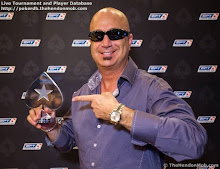In poker, talent and strategy often steal the spotlight, but ask any seasoned professional what keeps them in the game year after year, and you’ll hear a less glamorous answer: bankroll management. It may not be as exciting as pulling off a bluff or winning a tournament, but it’s the foundation that allows poker players to survive the inevitable ups and downs of the game. Without a strong bankroll strategy, even the most skilled player can find themselves sidelined. Let’s break down how bankroll management works in practice and why it’s the lifeline of a professional career.
Understanding Why the Bankroll Matters
At its core, a bankroll is simply the money you’ve set aside exclusively for poker. It’s not rent money, grocery money, or cash for nights out. It’s your working capital, the same way a small business sets aside funds to operate. Professionals treat this money with respect because poker is a game of variance. Even when you’re playing perfectly, luck can swing against you for weeks. A healthy bankroll cushions those swings, ensuring that nasty streaks don’t end your career.
Separating Poker Funds from Personal Life
One of the biggest mistakes aspiring pros make is mixing their poker bankroll with personal finances. It may feel harmless to dip into your winnings to pay for bills, but this habit erodes the foundation you’re building. Imagine running a restaurant and dipping into the cash register every time you need gas—it wouldn’t take long before the business collapses. Successful players keep their poker bankroll in a separate account or wallet, ensuring that it’s never confused with everyday money. This clear boundary is the first step toward long-term stability.
Deciding on the Right Buy-In Levels
A critical aspect of bankroll management is selecting stakes that align with your bankroll size. A standard guideline is to maintain at least 20 to 30 buy-ins for cash games and 50 to 100 buy-ins for tournaments, where variance is higher. For example, if you have $5,000 set aside for poker, playing $1/$2 cash games makes sense, but jumping into $10/$20 games is reckless. Professionals don’t view lower stakes as a step backward—they see them as smart investments that keep them in action without risking ruin.
Handling Downswings with Discipline
Every poker pro experiences downswings —periods when nothing seems to go right. Maybe your pocket aces get cracked multiple times in a row, or maybe your bluffs keep getting called. These stretches can be emotionally brutal, but bankroll management provides the cushion to weather them. The key is discipline—resisting the urge to “chase” losses by moving up in stakes too quickly. Instead, pros sometimes drop down in stakes temporarily, preserving their bankroll while rebuilding confidence. This humility often sets survivors apart from quitters.
Setting Stop-Loss and Win Goals
Just as investors use stop-loss orders to limit risk, poker players benefit from setting personal limits. A stop-loss rule might be as simple as deciding you’ll leave the table if you lose three buy-ins in one session. This protects you from tilting—letting emotions take over after repeated losses. On the flip side, setting win goals helps lock in profits. If you’re up several buy-ins, walking away ensures you don’t give it all back. These boundaries aren’t about fear; they’re about structure and control in a game built on uncertainty.
Tracking Results Like a Business Ledger
Professional poker is not gambling—it’s a business. And like any business, it needs record-keeping. Serious players track every session: stakes played, hours logged, profits, and losses. This data reveals patterns over time. You might discover you perform better in tournaments than in cash games, or that fatigue impacts your late-night play. Tracking also prevents self-deception. It’s easy to remember big wins and forget tough losses, but the numbers never lie. Treating poker like a ledger-driven enterprise transforms it from a hobby into a sustainable profession.
Balancing Risk with Opportunity
Bankroll management isn’t about avoiding risk entirely—it’s about taking the right risks at the right time. For example, playing in a higher-stakes tournament with a portion of your bankroll might be a sensible move if the potential rewards justify the associated variance. The trick is balance. Professionals know when to take calculated shots at bigger games and when to stay grounded. It’s similar to career development in other fields: sometimes you accept a risky project for growth, but you don’t stake your entire career on one gamble.
Preparing for the Long Game
Ultimately, bankroll management is about endurance. Poker careers aren’t built on one tournament win or a lucky streak. They’re built on years of steady, disciplined play. Managing your bankroll ensures you can keep learning, improving, and competing even when variance works against you. Think of it as the safety net that lets you swing freely without fear of falling. With that foundation, poker stops being a fragile dream and becomes a sustainable career path.
Poker may be a game of skill, strategy, and psychology, but none of those matters without the financial discipline to back them up. Bankroll management isn’t the flashiest part of the journey, but it’s the glue that holds everything together. For professionals who want to make a living at the felt, learning how to treat their bankroll like a business is the ultimate strategy for long-term success.




0 Comments